
Wiesbaden is the capital of the German state of Hesse, and the second-largest Hessian city after Frankfurt am Main. With around 283,000 inhabitants, it is Germany's 24th-largest city. Wiesbaden forms a conurbation with a population of around 500,000 with the neighbouring city of Mainz. This conurbation is in turn embedded in the Rhine-Main Metropolitan Region—Germany's second-largest metropolitan region after Rhine-Ruhr—which also includes the nearby cities of Frankfurt am Main, Darmstadt, Offenbach am Main, and Hanau, and has a combined population exceeding 5.8 million.

Adolphe was Grand Duke of Luxembourg from 23 November 1890 to his death on 17 November 1905. The first grand duke from the House of Nassau-Weilburg, he succeeded King William III of the Netherlands, ending the personal union between the Netherlands and Luxembourg. Adolphe was Duke of Nassau from 20 August 1839 to 20 September 1866, when the Duchy was annexed to the Kingdom of Prussia.
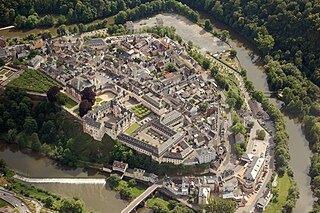
Weilburg is, with just under 13,000 inhabitants, the third biggest town in Limburg-Weilburg district in Hesse, Germany, after Limburg an der Lahn and Bad Camberg.

Eltville am Rhein is a town in the Rheingau-Taunus-Kreis in the Regierungsbezirk of Darmstadt in Hesse, Germany. It lies on the German Timber-Frame Road.
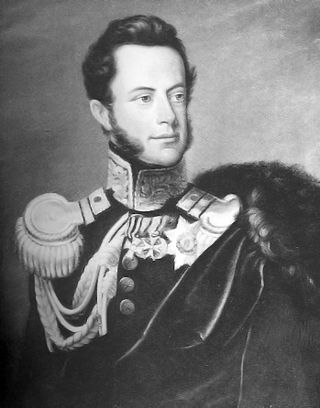
Wilhelm was joint sovereign Duke of Nassau, along with his father's cousin Frederick Augustus, reigning from 1816 until 1839. He was also sovereign Prince of Nassau-Weilburg from 1816 until its incorporation into the duchy of Nassau.

The Taunus Railway is a double-track electrified railway line, which connects Frankfurt and Wiesbaden, Germany. It is 41.2 km long and follows the course of the Main on its north side, running quite close to it in some places. Its first stage was opened in September 1839 and is thus the oldest railway line in the German state of Hesse and one of the oldest in Germany. Today it is used by Regional-Express trains between Frankfurt and Wiesbaden and the trains of line S1 of the Rhine-Main S-Bahn between Frankfurt-Höchst and Wiesbaden. Between Frankfurt Hbf and Frankfurt-Höchst, they run on the line of the former Hessian Ludwig Railway.
The Königssondergau was a Frankish gau (district) which existed in the area north of the confluence of the Rhine and Main rivers in Germany, from Frankish times until the end of the 12th century. Often mistakenly equated with the Rheingau, the Gau was based around the former Roman administrative district of Civitas Mattiacorum. The name Kunigessuntera is documented the first time in 819. A main court (fiscus) with senior officials were present in Wiesbaden; sub-courts existed in Biebrich and Mosbach.

Mainz-Amöneburg is a district administered by the city of Wiesbaden, Germany. Its population is 1,743 (2020). Mainz-Amöneburg was formerly a district of the city of Mainz, until the public administration by the city of Wiesbaden was decided on August 10, 1945. The reason for this had been the easy control of the Allied Occupation Zones in Germany, where the Rhine formed the border between the American sector and the French sector. Mainz-Amöneburg faces the city of Mainz on the opposite shore of the Rhine river. The former border between the Grand Duchy of Hesse and the Prussian Province of Hesse-Nassau lay between Amöneburg and Biebrich until 1945.

Schierstein is a southwestern borough of Wiesbaden, capital of state of Hesse, Germany. First mentioned in historical records in 860, Schierstein was incorporated into Wiesbaden in 1926. Today the borough has about 10,000 residents. Situated on the Rhine River, Schierstein is known as the "Gateway to the Rheingau."

Dotzheim is a western borough of Wiesbaden, capital of the state of Hesse, Germany. It is the second largest borough of the city by area and, with over 27,000 inhabitants the second-most populated of Wiesbaden's suburban boroughs. It was the largest village in the former Duchy of Nassau. The formerly independent village was incorporated into Wiesbaden in 1928.

The Rettbergsaue is a natural island in the Rhine River at Wiesbaden, Germany. It is situated between the main channel of the Rhine to the north and a smaller channel, the Wachsbleicharm, in the south. The Wachsbleicharm forms the border between the federal states of Hesse and Rhineland-Palatinate.

Biebrich Palace is a Baroque residence (Schloss) in the borough of Biebrich in the city of Wiesbaden, Hesse, Germany. Built in 1702 by Prince Georg August Samuel of Nassau-Idstein, it served as the ducal residence for the independent Duchy of Nassau from 1816 until 1866.
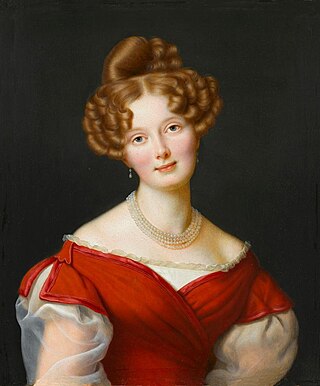
Princess Pauline Friederike Marie was Duchess consort of Nassau from 1829 to 1839 as the second wife of William, Duke of Nassau. She was a member of the House of Württemberg and a princess of Württemberg by birth.

Friedrich August, Duke of Nassau, Prince of Nassau-Usingen was the last Prince of Nassau-Usingen and, jointly with his cousin, Friedrich Wilhelm of Nassau-Weilburg, first Duke of Nassau. He died without surviving male issue and was succeeded by his cousin's son, Wilhelm.

George August Samuel of Nassau-Idstein was Graf from 1677, and Prince from 1688 until his death, of Nassau-Idstein. He worked mainly in Wiesbaden.
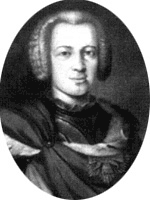
Charles, Prince of Nassau-Usingen, was Prince of Nassau-Usingen from 1718 to 1775.

Wiesbaden City Palace is a neo-classical building in the center of Wiesbaden, Germany. It was completed in 1841 as the principal city residence of the Dukes of Nassau. The palace has several wings, 145 rooms, and is architecturally integrated with a group of ancillary buildings constructed both before and after it was built. With ornate towers, gables and a slate roof laid in herringbone patterns, the three-story complex lends charm and its name to the central square of Wiesbaden: Palace Square.
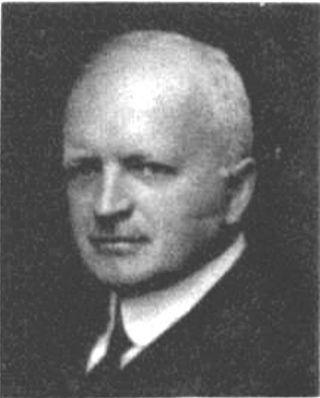
Wilhelm (Jakob) Ferdinand Kalle was a German chemist, industrialist and politician.
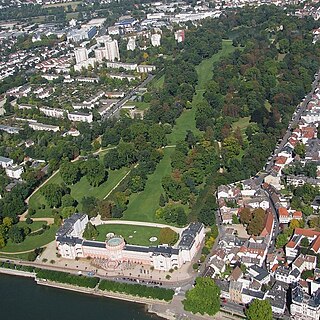
The Schlosspark Biebrich is a park at Schloss Biebrich in Wiesbaden-Biebrich, Hesse, Germany. First designed as a French formal garden, it was expanded changed to an English landscape garden and expanded 1817 to 1823, the last project of Friedrich Ludwig von Sckell. The public park extends north of the building in the valley of the Mosbach creek for around 1,200 m and is 250 m wide. It is the venue for the annual horse show Internationales Pfingstturnier Wiesbaden.

Friedrich Joachim Michael Stengel was a German architect and baumeister.

























